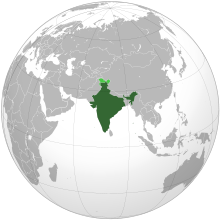India: Initial Take On Pune Blasts – Analysis
By B. Raman
There were four minor blasts at Pune on the evening of August 1, 2012, which did not cause any fatalities. They injured two persons. The injuries do not appear to be of a serious nature.
According to information available so far, the four blasts took place one after the other — not simultaneously — within an interval of about 10 minutes. This might have required more than one perpetrator.

I am inclined to believe as of now that the blasts were not meant to be mass casualty strikes. If the perpetrators had wanted to cause more casualties or large-scale panic they would have used either a lethal explosive mixed with splinters or a large quantity of low-lethality explosive with splinters. They do not appear to have done so.
The indications till now are that the four were carefully-timed explosions that would have required some knowledge and prior experience in assembling the improvised explosive devices (IEDs).
My assessment on the basis of evidence available till now is that the blasts were meant to convey a message to the police that the organisation to which the perpetrators belonged was still alive and active. They were also meant to pep up the morale of the members of the organisation by demonstrating that the organisation is in a position to strike again and that they should not get demoralised.
While it would be very early to say which organisation might have been responsible, the initial needle of suspicion would point to the Indian Mujahideen (IM), which had in the past recruited some of its cadres in the Pune area and was alleged to have played a role in the Pune Bakery blast of February, 2010.
There has been no terrorist act attributable to the IM since September last year. The IM would have wanted to remove any impression in the minds of the police and its followers that the absence of any act of terrorism since last September probably indicated an irreparable damage to the membership and infrastructure of the organisation.
One should be disinclined to connect the blasts with Shri S. K. Shinde taking over as the Home Minister yesterday. Though the blasts were not sophisticated, selecting the perpetrators, assembling the devices, identifying the spots and having the IEDs planted could not have been done so fast after Shri Shinde took over as the Home Minister.
A point to be investigated is whether the blasts could have been linked to Abu Jundal, of the IM, who had helped the Lashkar-e-Toibha in organising the 26/11 terrorist strikes in Mumbai, being brought to Mumbai for interrogation by the Maharashtra Police.

Why should any one in his correct senses carry out this type of blasts in Pune and for what purpose?Lot of planning and expertise is required for this type of timer blasts. Also some papers say the blasts did not do its original purpose of killing people due to faulty design of the bomb.Is it correct to reveal this tyupe of information? Why the state police is bent upon saying that it is NOT a terrorist attack?